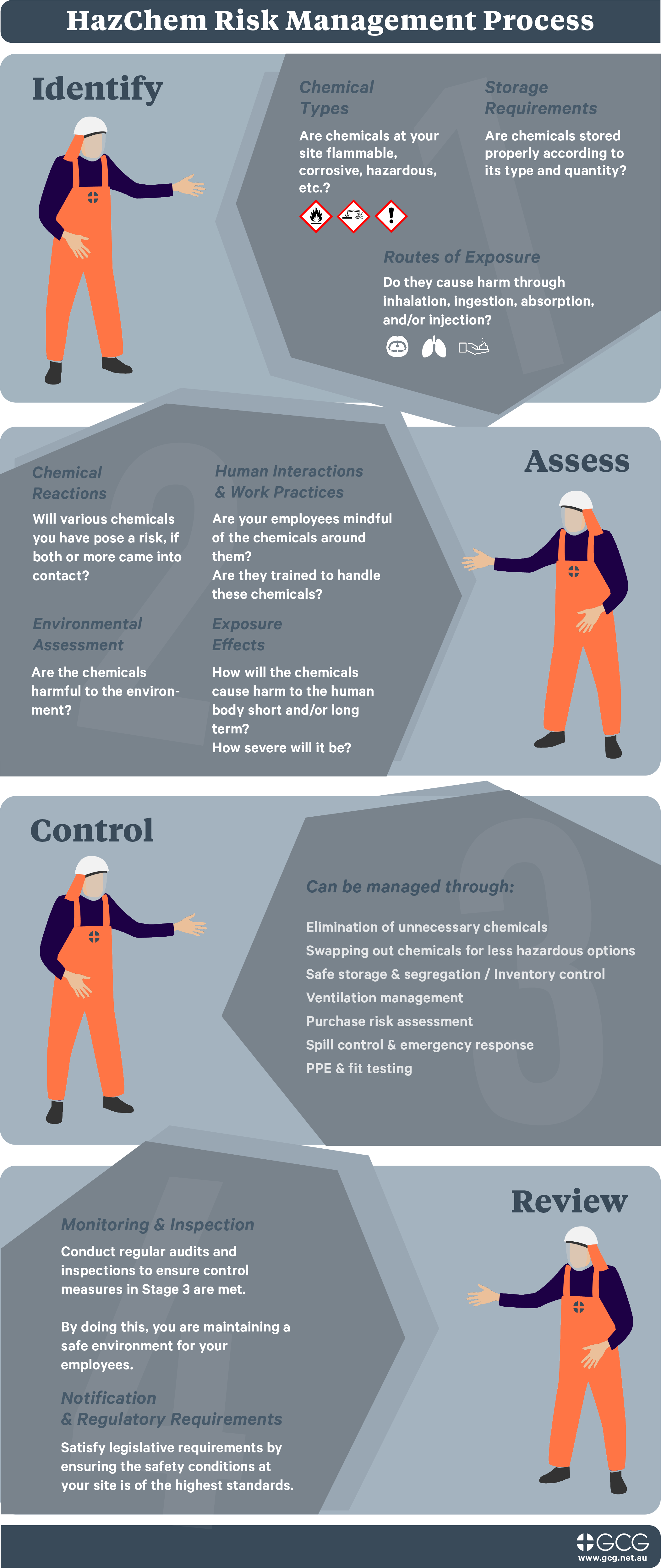
A list of reactions and health effects as caused by hazardous chemicals can be attributed to a number of causes:
- Corrosive chemicals (such as acids, and alkalis) cause destruction at the site of contact. Skin, eyes, and digestive systems are the most commonly affected parts of the body.
- Irritants (chlorine) cause inflammation of tissues where they are deposited. Skin irritants may cause reactions like eczema or dermatitis. Severe respiratory irritants may cause shortness of breath, inflammatory responses, and oedema.
- Allergic reactions (metals, oils) can be created by chemical allergens or sensitisers which cause skin or respiratory allergic reactions.
- Asphyxiants (CO, H2S) exert their effects by interfering with the oxygenation of the tissues. Simple asphyxiants are inert gases that dilute the available atmospheric oxygen below the level required to support life. Oxygen-deficient atmospheres may occur in tanks, holds of ships, silos or mines. The oxygen concentration in the air should never be below 19.5% by volume.
- Human carcinogens (benzene, vinyl chloride) are chemicals that have been clearly demonstrated to cause cancer in humans. Soot and coal tars were the first chemicals suspected to cause cancer.
- Reproductive effects (manganese, mercury, lead) interfere with the reproductive or sexual functioning of an individual. Developmental toxicants are agents that may cause an adverse effect on offspring (such as birth defects) of exposed persons. Embryotoxic or foetotoxic chemicals can cause spontaneous abortions or miscarriages.
- Systemic poisons (lead, mercury, cadmium) are agents that injure particular organs or body systems which cause long-term chronic illness.
Can you spot potential hazards lurking in the images below?
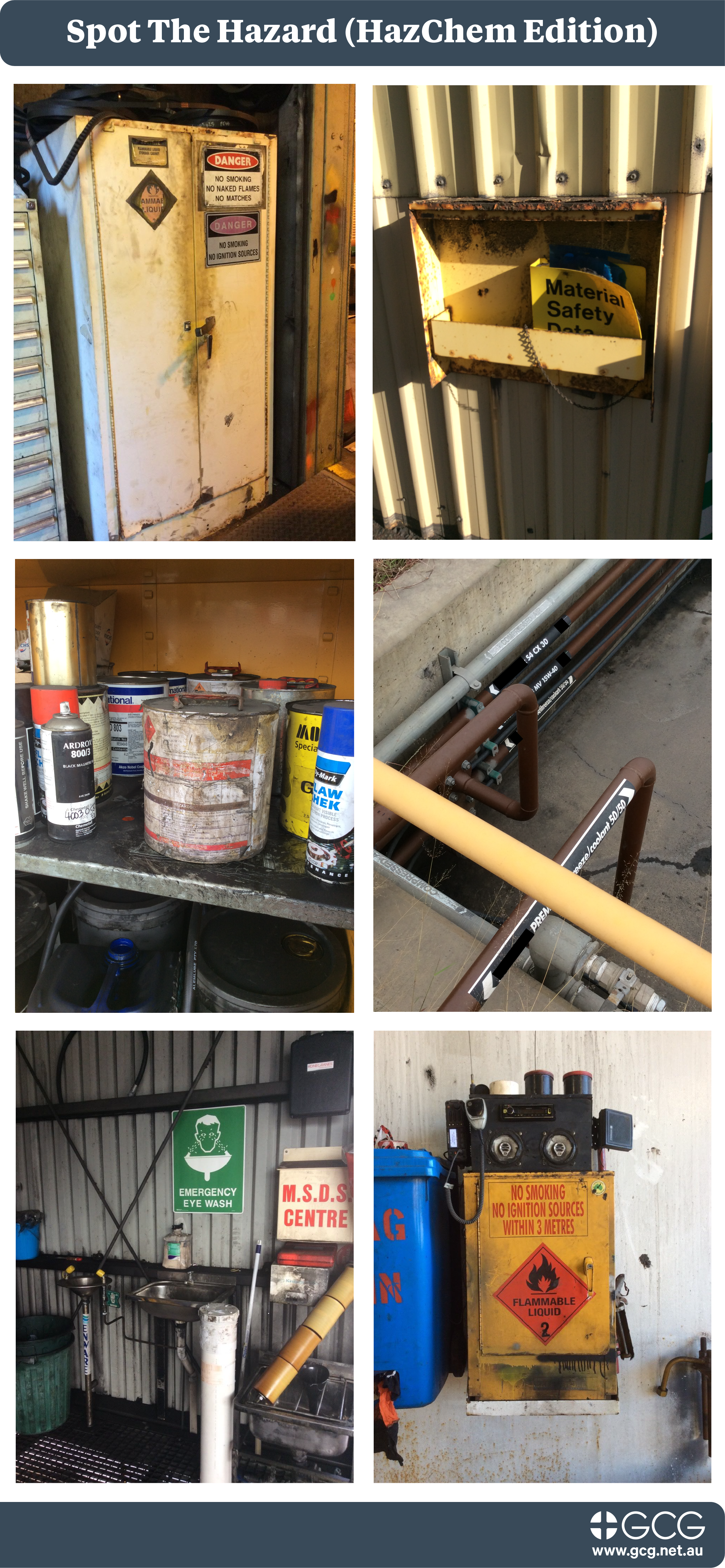
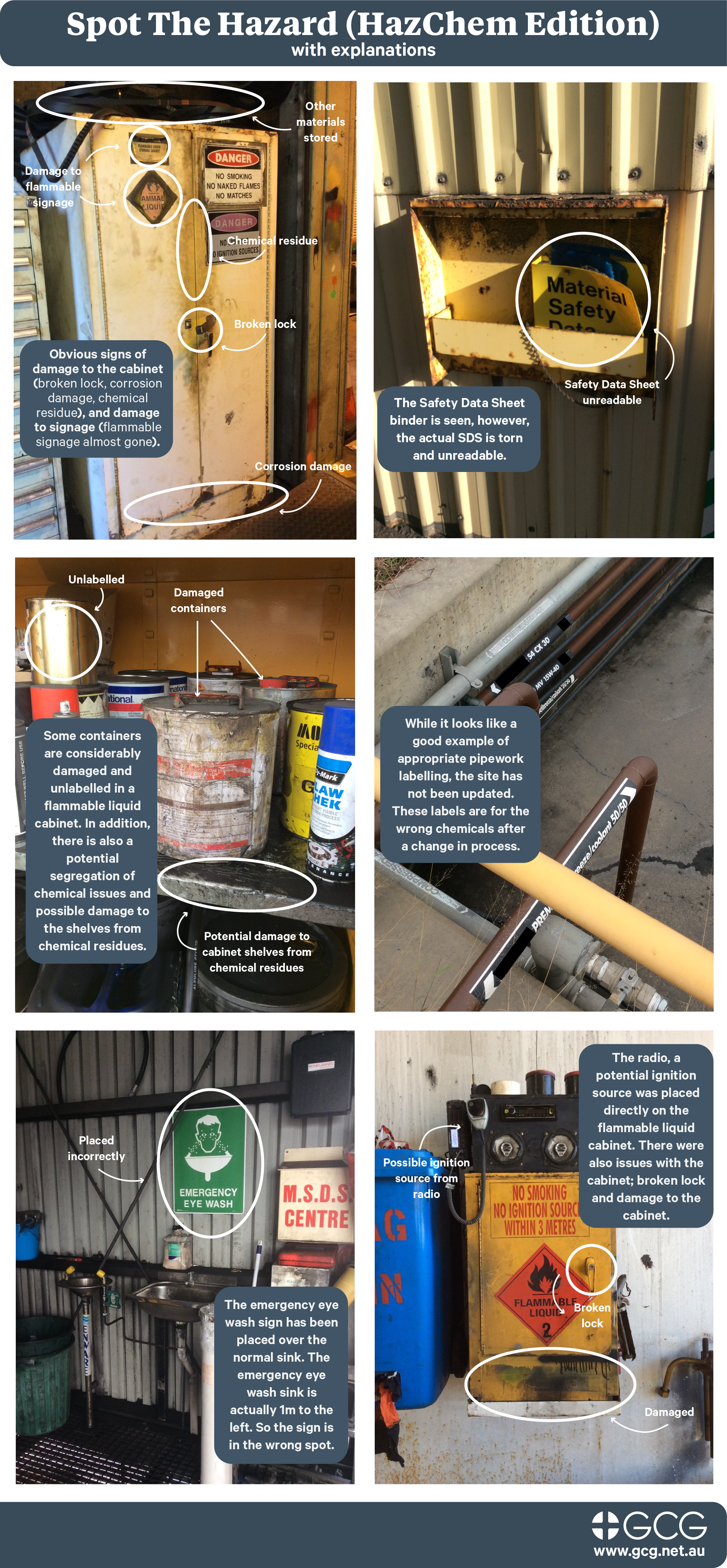 GCG work with clients to promote practices in order to eliminate all forms of hazardous exposure to chemicals and maintain systems to ensure all practices are undertaken according to regulations and legislation outlined in the Dangerous Goods Standard and the NOHSC model.
Adhering to the WHS system of chemical classification, and hazard communication on labels and Safety Data Sheets (SDS), we believe our clients have the ability to successfully control the well-being of their people who deal with hazardous chemicals in the workplace.
GCG work with clients to promote practices in order to eliminate all forms of hazardous exposure to chemicals and maintain systems to ensure all practices are undertaken according to regulations and legislation outlined in the Dangerous Goods Standard and the NOHSC model.
Adhering to the WHS system of chemical classification, and hazard communication on labels and Safety Data Sheets (SDS), we believe our clients have the ability to successfully control the well-being of their people who deal with hazardous chemicals in the workplace.
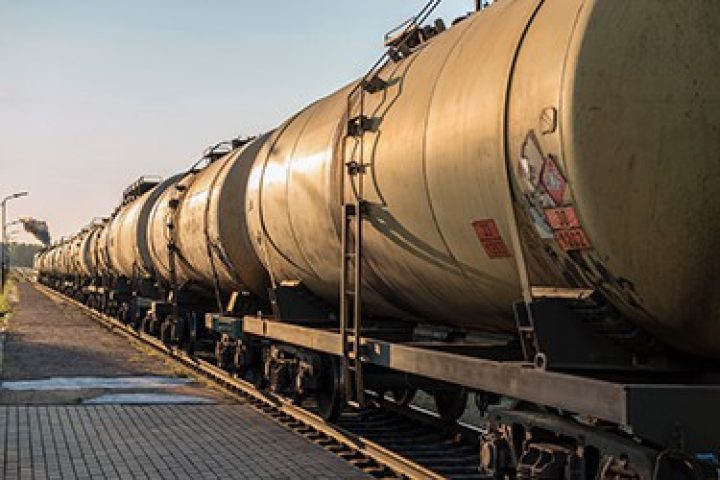
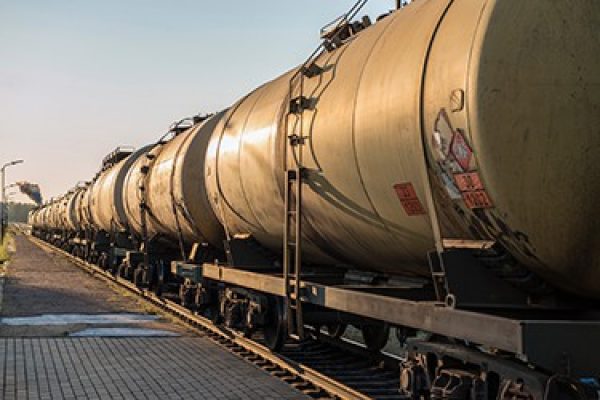 Hazardous Chemicals are dangerous to humans, property, and the environment, and are commonly used across many industries (and workplaces) in Australia. We work with clients to assure safety, education, and strict management practices are carried out and maintained when dealing with hazardous elements.
Hazardous Chemicals are dangerous to humans, property, and the environment, and are commonly used across many industries (and workplaces) in Australia. We work with clients to assure safety, education, and strict management practices are carried out and maintained when dealing with hazardous elements.